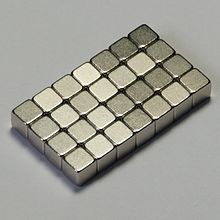 Magnets are used in a wide range of applications, some of which include refrigerators, freezers, televisions, stereos, medical equipment and more. In hospitals, for instance, magnetic resonance imaging (MRI) machines are used to look inside patients’ body. To put the strength of an MRI into perspective, statistics show that it’s roughly 20,000 times stronger than the Earth’s own magnetic field.
Magnets are used in a wide range of applications, some of which include refrigerators, freezers, televisions, stereos, medical equipment and more. In hospitals, for instance, magnetic resonance imaging (MRI) machines are used to look inside patients’ body. To put the strength of an MRI into perspective, statistics show that it’s roughly 20,000 times stronger than the Earth’s own magnetic field.
Some magnets, such as those used in MRIs, are stronger than your “typical” magnets. Known as rare-earth magnets, they are specially made from alloys of rare earth elements in the lanthanide, scandium and yttrium series. To learn more about rare-earth magnets and how they work, keep reading.
Rare-earth magnets were first developed back in the late 1970s and early 1980s. Until then, magnets were wade of common elements like ferrite and alnico. In the mid 1960s, K. J. Strnat and G. Hoffer of the US Air Force Materials Laboratory began working on a new, stronger magnet. After discovering that an alloy of yttrium and cobalt produced a significantly stronger magnetic field, the two knew they were onto something. This development laid the roots for the modern-day rare-earth magnet, which is now used throughout the world for a wide variety of applications.
One of the characteristics that makes rare-earth magnets unique is that they are ferromagnetic. Basically, this means they can be permanently magnetized. With that said, the superior strength of rare-earth magnets is attributed to other characteristics, such as their crystalline structure. The crystalline structure of rare-earth magnets gives it greater magnetic anisotropy, which means the crystals magnetize along a crystal axis, and it’s difficult to magnetize in other directions. Rare-earth magnets are also composed of crystalline grains, which are aligned in a magnetic field during production to achieve the same direction on all points of the axis.
It’s also worth noting that rare-earth magnets feature an orbital electron structure in which many unpaired electrons are arranged. This differs from traditional magnets, which feature electrons in pairs of opposite spins; thus, their magnetic fields cancel each other out.
Hopefully, this gives you a better understanding of rare-earth magnets and why they are so powerful.
If you’re interested in buying rare earth magnets, click here to check out our selection.
See Monroe’s Rare Earth Magnets.
No tags for this post.
